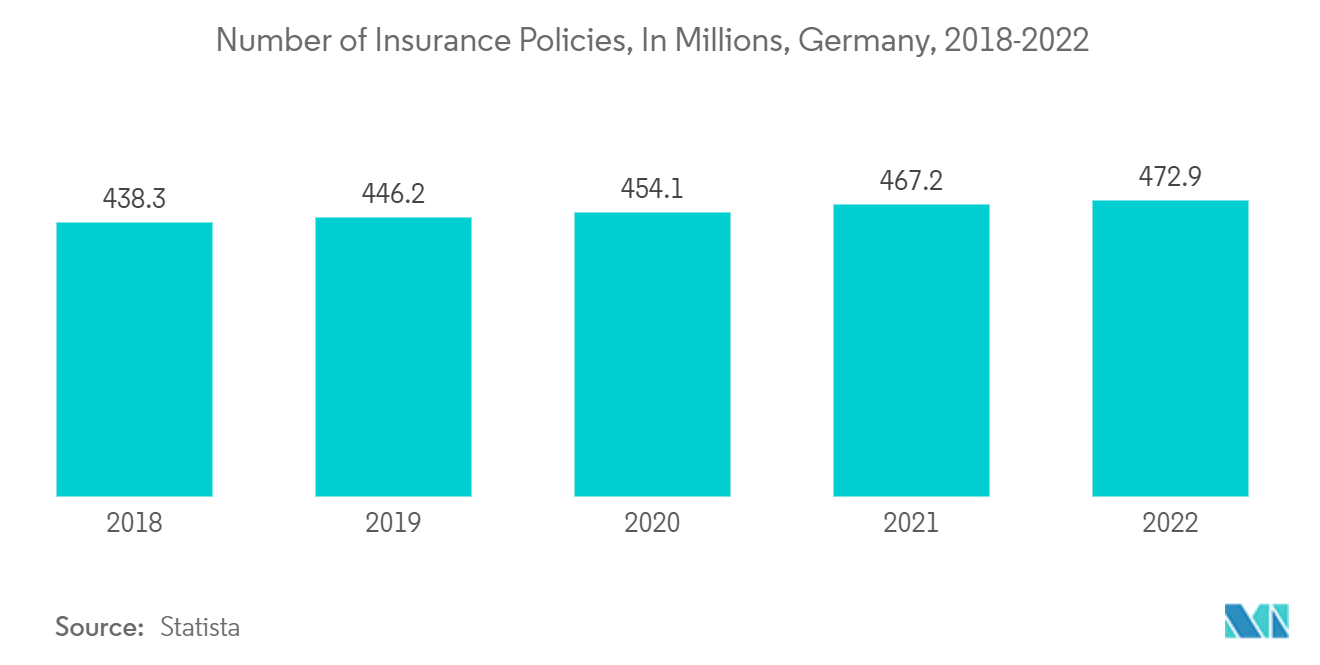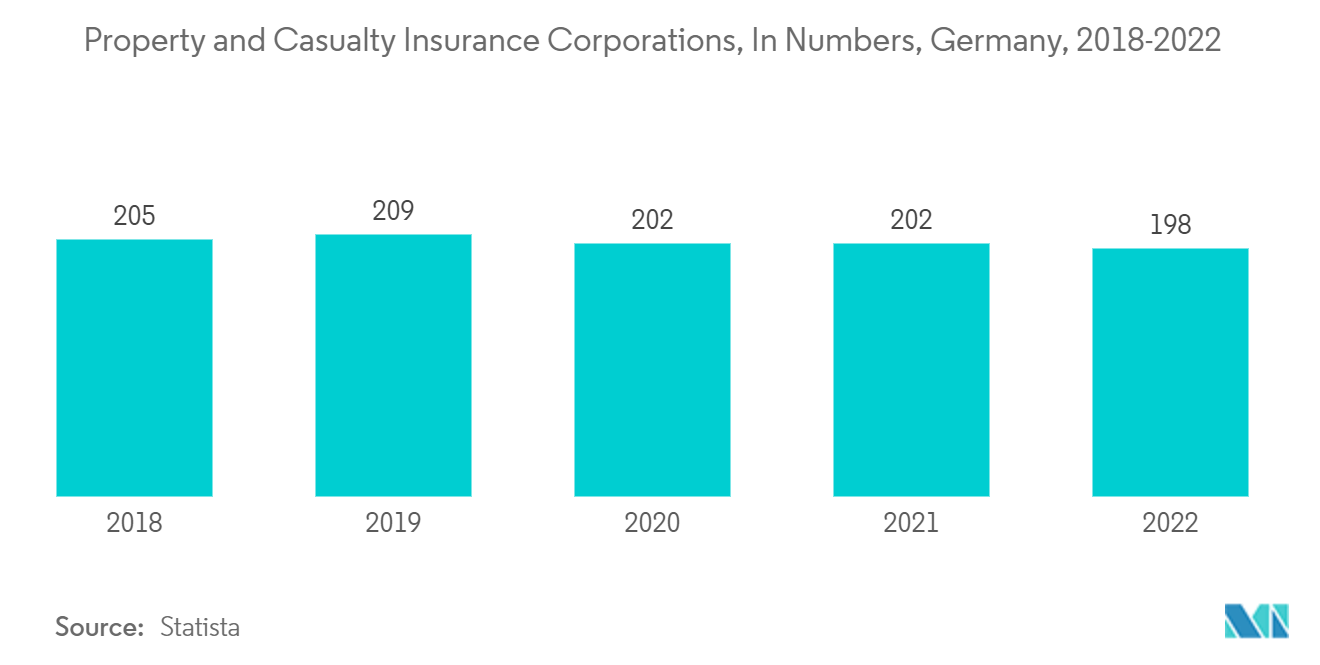Market Trends of Germany Property & Casualty Insurance Industry
Increasing Insurance Contracts is Driving the Market
The increasing number of insurance contracts in different segments is driving the market growth. The importance of protecting against property damage and liability risks is becoming more and more apparent to individuals and businesses. As a result, more individuals are purchasing home insurance policies to safeguard their properties against unforeseen events such as fire, theft, or natural disasters. Similarly, businesses are increasingly investing in commercial property insurance to protect their assets and operations from potential risks.
Moreover, the growing complexity of risks individuals and businesses face is fueling demand for specialty insurance products within the P&C market. Cyber insurance, environmental liability coverage, and professional indemnity insurance are among the specialized products witnessing increased adoption as organizations seek protection against emerging risks in the digital age. Overall, the increasing number of insurance contracts across different segments of the P&C insurance market in Germany is indicative of growing awareness, evolving regulatory requirements, and the need for comprehensive risk protection among individuals and businesses, thereby driving market expansion.

Digitalization of the Insurance Industry is Notably Driving Market Growth
Digitalization is significantly driving the Property and Casualty (P&C) insurance industry in Germany, transforming various aspects of the insurance value chain and enhancing customer experiences. One of the primary ways digitalization is impacting the P&C insurance industry is through improved customer interactions. Insurers are leveraging digital platforms, mobile apps, and online portals to provide seamless and convenient experiences for customers, allowing them to purchase policies, file claims, and access policy information with greater ease and speed.
Moreover, digitalization is revolutionizing the underwriting process. Insurers are harnessing advanced machine learning algorithms, artificial intelligence, and data analytics to more precisely identify threats and efficiently. This enables insurers to personalize premiums based on individual risk profiles, leading to more tailored and competitive insurance offerings for customers. Additionally, digitalization is enabling insurers to develop innovative insurance products and services. For example, usage-based insurance (UBI) policies utilize telematics devices to track driving behavior, allowing insurers to offer personalized premiums based on actual usage and driving habits. Insurers are leveraging big data analytics and predictive modeling to identify emerging risks, assess potential losses, and develop proactive risk mitigation strategies.


